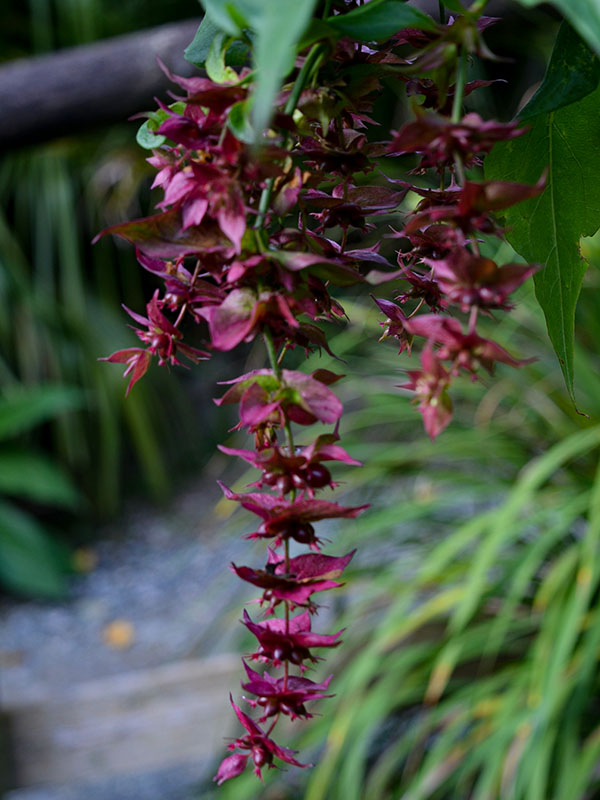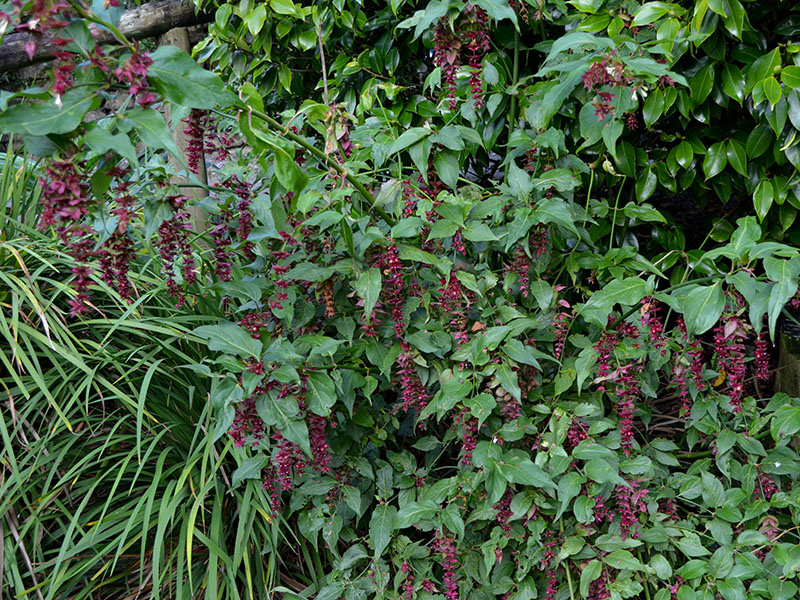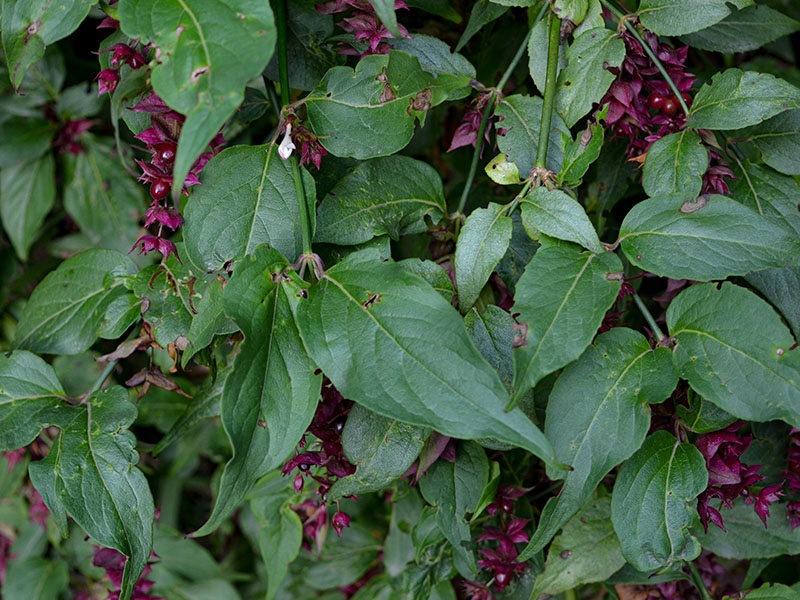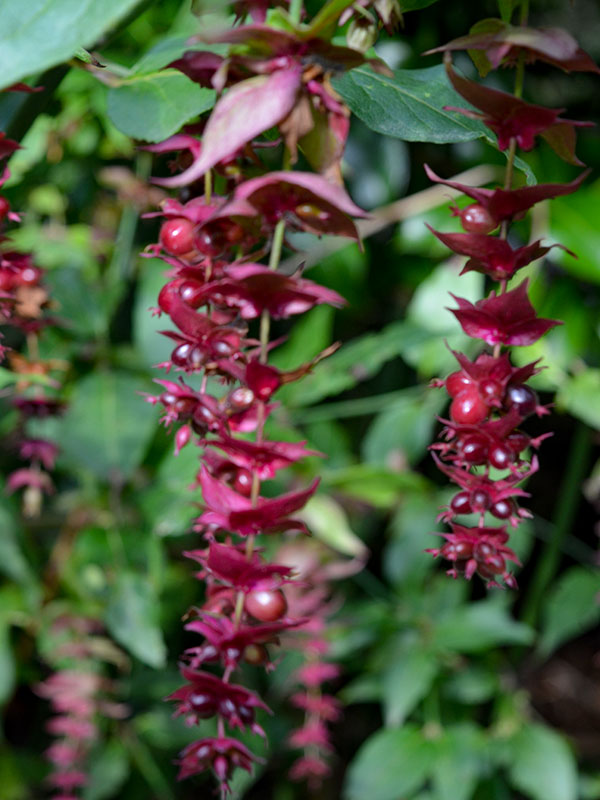
Woody > Leycesteria > Leycesteria formosa > Leycesteria formosa
Leycesteria formosa
Himalayan Honeysuckle, Flowering Nutmeg or Pheasant Berry
Origin: The Himalaya's and southwestern China.
| Family |
| Caprifoliaceae |
| Genus |
| Leycesteria |
| Species |
| formosa |
| Category |
| Woody |
| Type |
| Shrub (deciduous) |
| Pronunciation |
| USDA Hardiness Zone |
| 7-10 |
| Canadian Hardiness Zone |
| 6b - 9a |
| RHS Hardiness Zone |
| H6 - H3 |
| Temperature (°C) |
| (-20) - 1 |
| Temperature (°F) |
| 4 - 34 |
| Height |
| 2-2.4 m |
| Spread |
| 1-1.2 m |
Photographs
Description and Growing Information
Flowering Period
| Landscape |
| Blackbirds eat the seeds from this plant. |
| Cultivation |
| The plant grows in all soil types. It can grow in semi-shade or no shade. It requires moist soil. The plant can tolerates strong winds but not maritime exposure. It can tolerate atmospheric pollution. |
| Growth |
| Medium |
| Habitat |
| Scrub and forest edge to 3000 m. |
| Leaf Description |
| The dark green leaves are opposite, ovate and tapered, 6-18 cm long and 4-9 cm broad, with an entire or wavy margin. |
| Flower Description |
| The flowers are produced on 5-10 cm long deep red pendulous racemes. Each flower is small, white, delicately scented, and subtended by a purple bract. |
| Fruit Description |
| The fruit is a soft purple-black berry 1 cm diameter, eaten by birds which disperse the seeds. |
| Notable Specimens |
| Trebah Gardens, Mawnan Smith, Nr Falmouth, Cornwall. |
| Propagation |
| Sow fresh seed immediately in a cold frame and it will germinate in the spring. Stored seed needs a minimum of three months cold stratification at 5°C and may take up to a year to germinate. |
.jpg)



